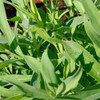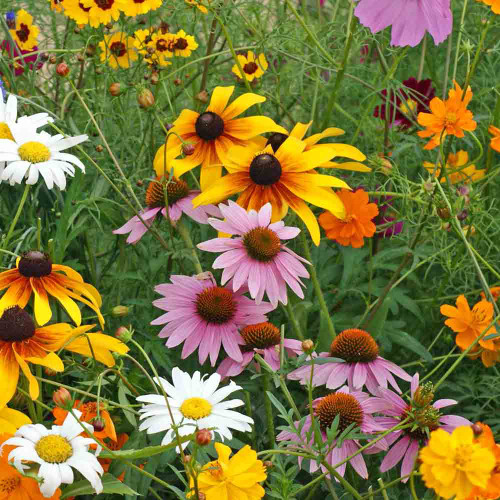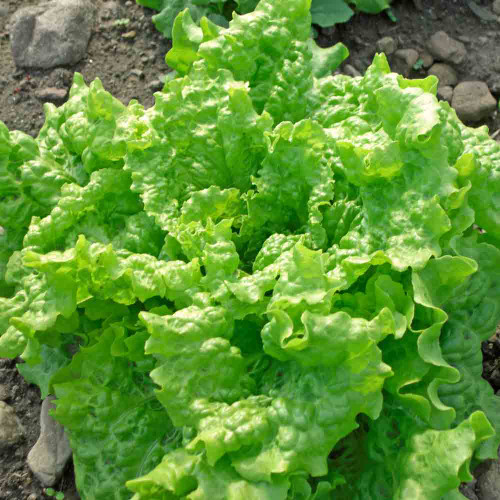Description
Sculpit/Stridolo - From Italian Fields to Your Garden
Sometimes, a single bite can spark an epiphany. For us, that moment happened at Slow Food's Terra Madre gathering in Turin, Italy, in 2012. Amidst incredible foods, one dish stood out: handmade ravioli filled with aged Grana Padano and a unique green called Sculpit. The taste was unforgettable – silky pasta yielding to a deeply rich, satisfying filling where the mild cheese and the distinctive 'green' flavor of Sculpit complemented each other perfectly, lingering pleasantly. That tasting crystallized for us why Underwood Gardens' founder, Mayo Underwood, had always championed this heritage Italian green, which was part of the collection when we took stewardship. It solidified our commitment to not only continue offering this unique variety but to helping gardeners truly understand and appreciate its place in traditional foodways and the garden.
Details
Known widely by intriguing names like the Italian Sculpit or Stridolo, and the descriptive Bladder Campion or Maidenstears, this adaptable plant grows as an herbaceous perennial. Typically hardy in USDA Zones 4/5 through 9, it often behaves as an annual or short-lived perennial depending on climate harshness, but often persists through self-seeding and usually flowers in its first year. The plant generally forms upright, branching clumps 12-18 inches tall and wide from a substantial, deep taproot, sending up flowering stems that can reach 2-3 feet.
Its distinctive leaves are arranged oppositely on the stems; they are typically lance-shaped, smooth, and often display a noticeable blue-green hue, measuring 1-3 inches long. From late spring through summer, open clusters of unique flowers appear. Each bloom showcases five deeply notched white (or pink-tinged) petals emerging from the plant's most unmistakable feature: an inflated, balloon-like calyx. This papery, pale green to purplish structure gives the plant its Bladder Campion name. The primary edible portions, valued for their soft, tender texture when young, are the leaves and shoots.
History
Native across Europe, temperate Asia, and North Africa, Sculpit has a long history intertwined with humans, primarily as a foraged edible green rather than a formally cultivated crop until more recently. Its deep cultural roots are reflected in more than 60 local names across Italy and beyond, such as sguasoi in Lombardia, carleti in Veneto, stridoli in Romagna, alongside the Spanish collejas and the more widely known Italian Sculpit. Its heirloom status stems from this long tradition of use in specific regional foodways. While distinct named cultivars are rare, the species itself, maintained through generations of foraging and culinary use, represents a living piece of European botanical and food heritage.
This deep cultural connection is evident across the continent. For instance, the town of Galeata in Italy's Emilia-Romagna region holds an annual festival ("Sagra dello Stridolo") each April dedicated to Sculpit, featuring market stalls and culinary demonstrations highlighting pasta and ravioli dishes made with the herb. Similarly, in Spain's La Mancha region, specialized foragers known as collejeros historically gathered and sold the wild leaves (collejas) for use in traditional stews like gazpacho viudo. Further evidence of its long-standing use comes from Crete and Cyprus, where browning the tender leaves and shoots in olive oil is a documented culinary practice.
Uses
Building on this rich history, Sculpit shines today primarily as a cooked leaf vegetable, valued for its texture and subtle flavor rather than acting as a pungent aromatic herb. Its mild yet distinct taste makes it a classic ingredient in Northeast and Central Italian cuisine, favored in minestre (soups), frittate (omelets), risotti, crepe fillings, polpettine (rissoles), stuffings for pasta like ravioli, and sometimes complementing meat or fish dishes. It can also be simply sautéed with garlic and olive oil, performing similarly to spinach. In our kitchen, we've found blanched Sculpit makes an exceptional fresh pasta filling when mixed with finely grated Grana Padano cheese and a touch of prosciutto or quality ham. Used this way, we find it offers a more rounded and less sharp 'green' flavor than spinach.
While the very youngest leaves might be tasted raw sparingly, it is traditionally not used in salads; cooking is recommended for optimal flavor, improved texture, and to mitigate natural saponins. Historically, the saponin-rich roots were also used as a soap substitute. Beyond the kitchen, the unique flowers add significant ornamental interest to gardens and cut arrangements, while also serving as a valuable resource for pollinators like bees, butterflies, and moths, contributing to a healthy garden. We’ve watched bees and butterflies consistently visiting the flowers throughout the summer in our own garden.
Companion Planting
Avoid planting near crops highly susceptible to slugs or powdery mildew if those are issues in your garden. Due to its potentially vigorous growth and self-seeding, ensure it has adequate space or use containers to prevent it from outcompeting delicate neighbors. Aesthetic pairings with plants that like similar conditions (Echinacea, Violets) work well.
Planting and Growing Tips
Choose a location that offers full sun to partial shade. Providing afternoon shade can often improve leaf quality in hotter climates. Most importantly, ensure the site has excellent soil drainage, as Sculpit dislikes wet feet, though it's quite adaptable to most soil types, even poor ones.
This easy-to-grow perennial is often best established by direct sowing into the garden bed. Plant seeds anytime from your last frost date through early summer, or sow again in late summer to mid-fall for overwintering in mild climates. Sow seeds about 3 inches apart and no more than ¼ inch deep (or simply press them onto the surface), as they may need light to germinate well. Consistent moisture is helpful for germination, which requires patience (typically 7-30 days) and soil temperatures ideally between 55-75°F. Once seedlings emerge, thin them to stand about 8-10 inches apart.
Once established, Sculpit is quite low-maintenance and drought-tolerant thanks to its deep taproot, though consistent watering yields the most tender leaves. It thrives with minimal fertilizer; compost at planting usually suffices. Mulch is beneficial. Deadhead flowers to prolong blooming and reduce spreading. Be aware Sculpit can self-seed readily and form persistent clumps, so use containers (12"+ deep, good drainage) if you need to control its spread. Fortunately, it's generally resistant to deer and rabbits.
Harvesting Tips
Harvest Sculpit leaves and shoots when they are young and tender for the best flavor and texture. The optimal time is typically in spring and early summer, or whenever new growth emerges, and crucially before the plant begins to flower heavily, as leaf quality declines afterward. Look for vibrant green leaves and shoots roughly 2 inches long that feel soft and flexible.
Sculpit responds well to repeat harvesting as a "cut and come again" green. Harvest frequently by snipping the tender shoot tips or individual outer leaves using clean scissors or fingers. Leave the central growing point intact to encourage regrowth. This regular harvesting promotes bushier plants and prolongs the period you can gather leaves. Once flowering becomes prominent or leaves begin to feel tough, it's generally best to cease harvesting for culinary use. As with most greens, harvesting in the cool morning hours after dew has dried often yields the best quality.
Learn More
From the soil to the seed to the food you eat - we'll help you grow your best garden!
1 Review
-
Love this thing
Grew this basically just to see what is tasted like and it has quickly become my favorite garden green. A perennial in my zone, 8a, as long as you trim it from time to time, it constantly produces gorgeous green leaves that go great in nearly every dish. It survives horrible heat, drought, four months of being ignored, only to explode into activity the minute I poked it with scissors.



















